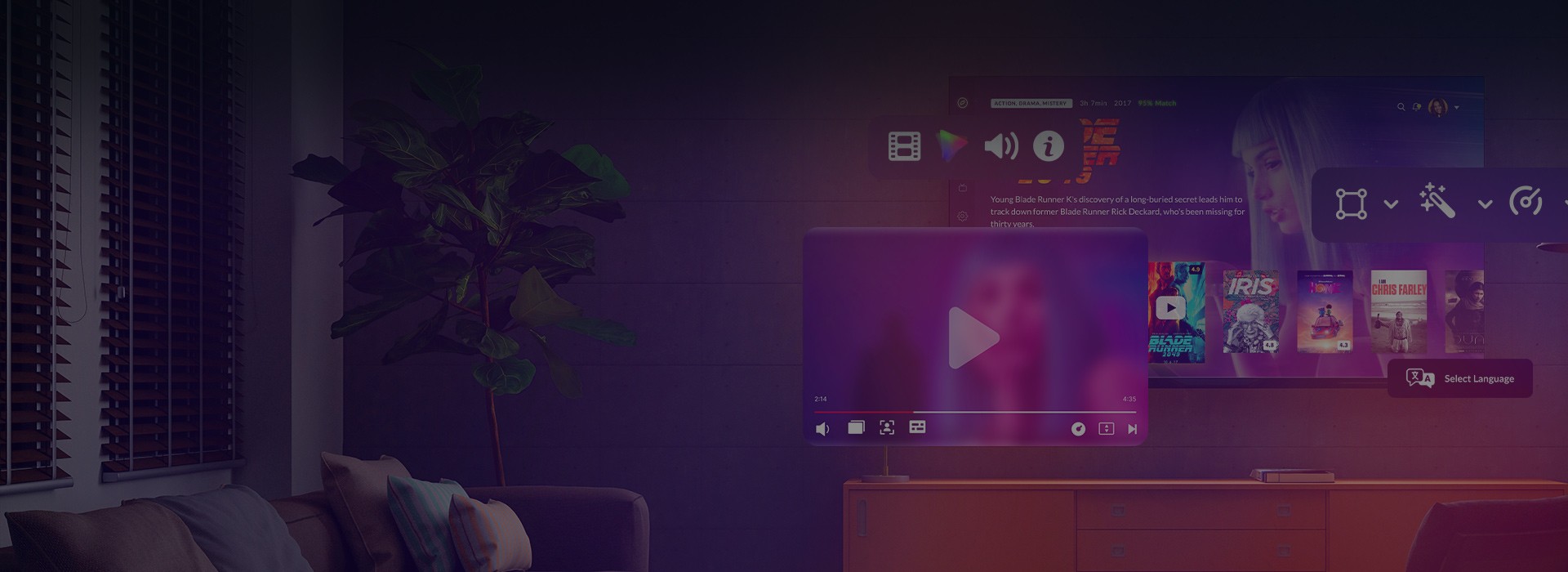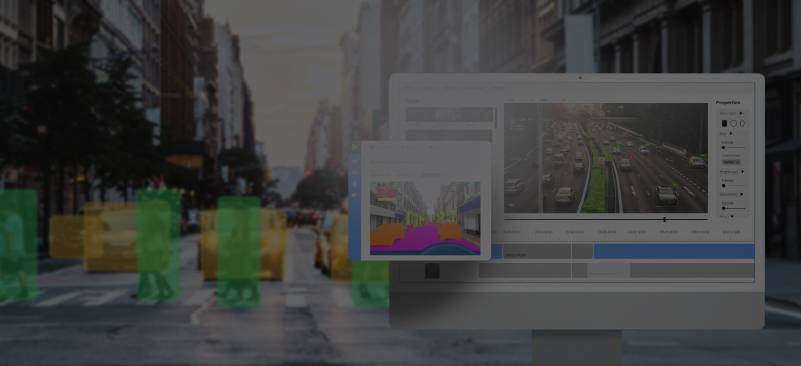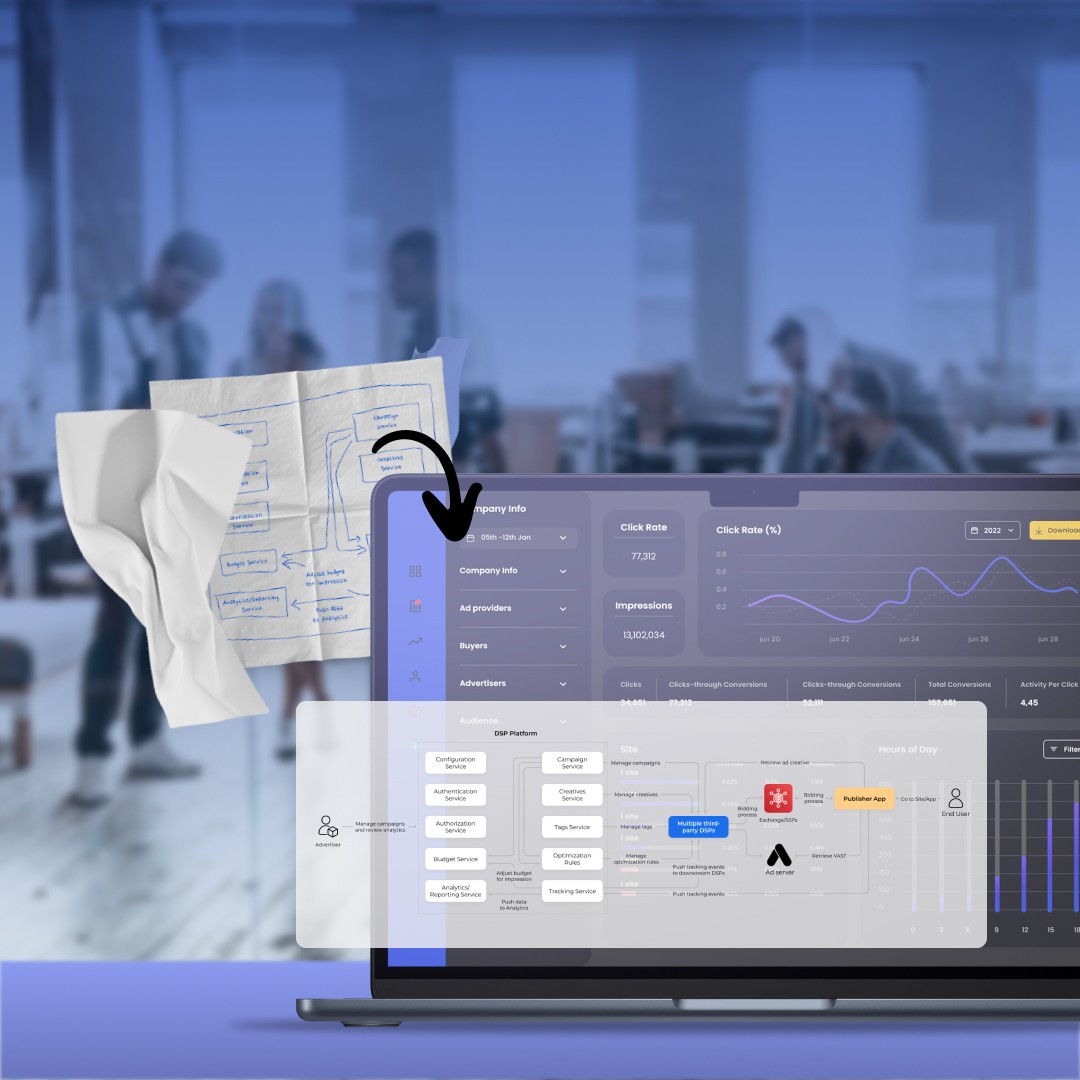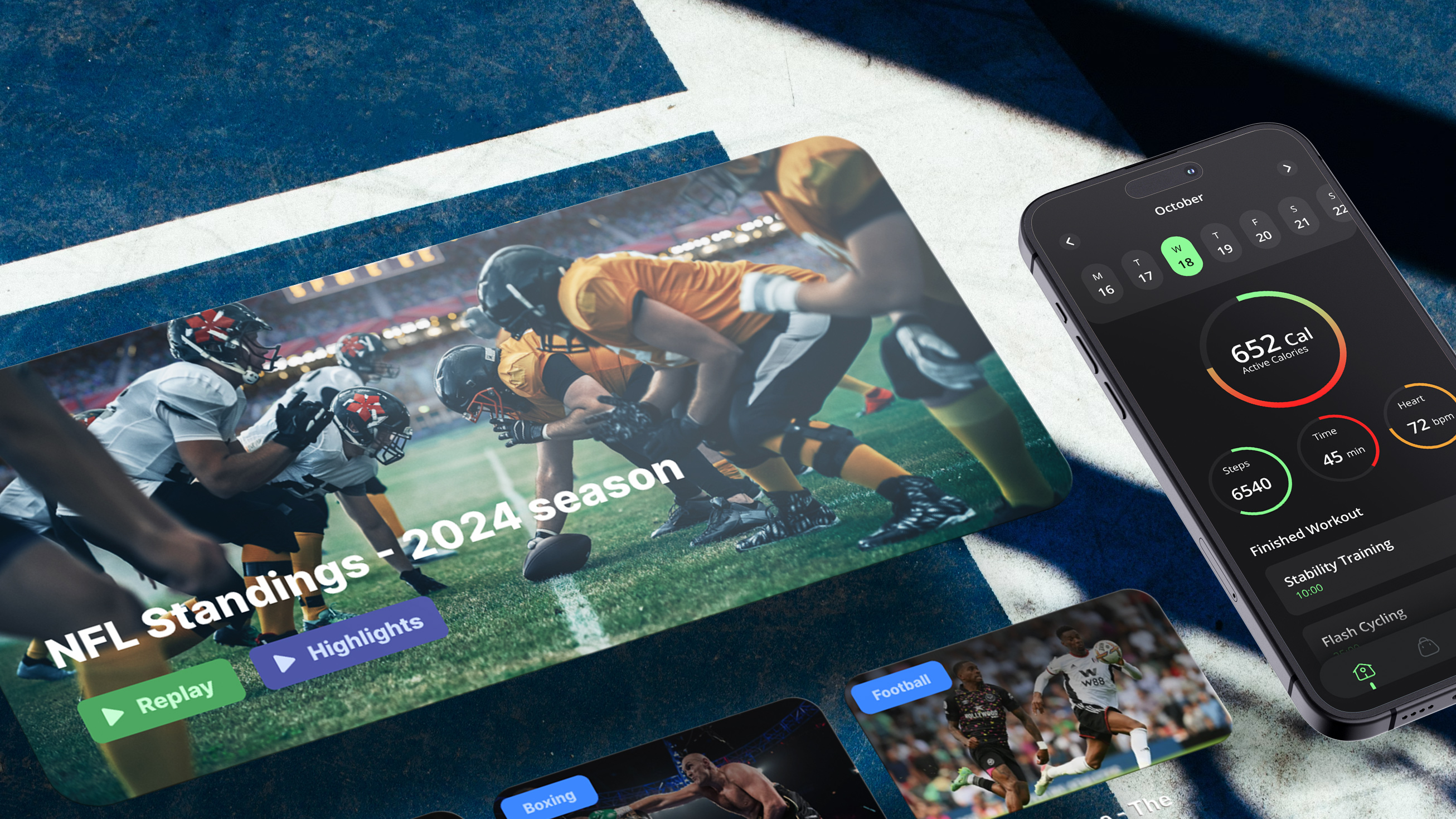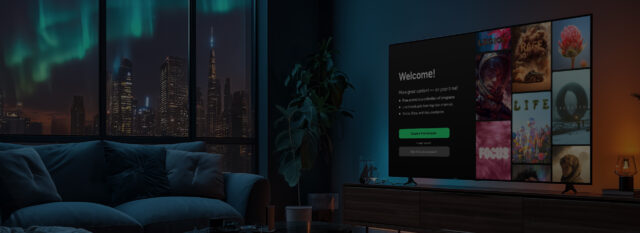In the streaming economy, few acronyms carry as much weight as DRM. Short for Digital Rights Management, it’s the invisible scaffolding that keeps the video content you take the obligation to stream from becoming just another torrent download.
Piracy, unfortunately, is far from a relic of the early internet. In 2023 alone, piracy websites recorded an estimated 141 billion visits globally — a 12% increase since 2019.
This is why, when studios and networks come knocking, their questions go beyond sleek interfaces or clever recommendation engines. Chief among their concerns is: “How do you protect OTT content?”. And that’s where the complexities of DRM begin to surface.
DRM isn’t a single switch or universal lock. There’s no master key. Apple, Google, Microsoft, and other major players each have their own proprietary systems, certifications, and idiosyncrasies. What passes compliance in one ecosystem might be rejected in another.
So if you’re an operator or distributor caught in the middle — navigating this fragmented landscape while balancing airtight security, broad device compatibility, and strict licensing demands — this article will demystify DRM and give you a strong foundation for smart implementation in 2025.
How DRM works in OTT
Digital Rights Management refers to technologies and strategies used to protect digital content from unauthorized access, copying, or distribution. For end users, DRM remains largely invisible — it doesn’t alter picture or sound quality. Yet for rightsholders, it’s a vital business tool as it ensures that only authorized users can access content while enforcing restrictions on how it can be used. For example, DRM can limit the number of devices on which a purchased movie can be played or prevent the copying of a digital book.
The technical pillars of DRM
OTT DRM systems employ a precise combination of technologies to protect content, each serving a distinct role:
- The impenetrable vault of encryption
DRM protected video is secured using advanced encryption standards, such as AES-128 or AES-256, transforming media into an unreadable cipher. Only users with a decryption key, delivered via secure protocols like HTTPS, can access the content.
- The selective barrier with access control
DRM enforces granular restrictions, such as limiting playback to five devices per account, disabling screen captures through HDCP (High-bandwidth Digital Content Protection), or restricting streams to approved platforms like specific browser versions or apps. This is comparable to a tailored access badge, granting entry only under strict conditions.
- The hidden signature of watermarking
Advanced watermarking embeds imperceptible identifiers into audio or video streams, using techniques like session-based or user-specific forensic markers. These act like a digital serial number etched into content, enabling distributors to trace pirated copies to their source — down to the individual account or device.
- The dynamic contract enabled by license management
OTT video protection uses license management to create dynamic, adaptable usage agreements between content providers and users. These licenses define specific terms of use — for example, allowing a movie to be watched for 48 hours after purchase or restricting playback to a single registered device. Each license is typically linked to either a user account or a unique hardware ID, ensuring that only authorized individuals or devices can access the content.
Why simple encryption isn’t enough: the hardware level
When your platform streams DRM protected video, the media isn’t just decrypted by the app or player. That would be too easy to compromise. Instead, modern DRM systems rely on what’s known as a Trusted Execution Environment (TEE). This is a secure part of the device’s hardware, completely isolated from the rest of the operating system.
Inside this secure zone, the encryption keys are used to decrypt the content, and the video is decoded and sent directly to a protected display surface. It never passes through regular system memory or software layers, which means even users with full control over their device can’t extract or duplicate the content.
This hardware-level enforcement is critical. That’s why most DRM certifications require devices to support things like TEE or HDCP. Without this level of integration, your content remains vulnerable, no matter how secure your app may seem.
As an example, if a user tries to share their screen during playback (e.g., over Microsoft Teams), they’ll often just see a black screen instead of the video. That’s not a glitch — that’s the DRM doing exactly what it’s supposed to do, by blocking unapproved output paths.
The dominant DRM solutions and why they don’t replace each other
At the heart of DRM in streaming are three dominant players:
- Google’s Widevine
- Apple’s FairPlay
- Microsoft’s PlayReady
These aren’t open-source technologies or interchangeable tools. They’re proprietary systems, each with its own APIs, certifications, legal frameworks, and device compatibility. In essence, every DRM is a black box — built to protect content, but often creating barriers for developers and content owners alike.
A quiet earthquake from Samsung
And now, the ground is shifting beneath one of those systems.
In a quiet but impactful update in early 2025, Samsung announced that it will begin phasing out support for Microsoft’s PlayReady DRM on its Smart TVs. The tentative sunset date? End of 2026. Samsung is now advising developers to migrate to Widevine, which it has supported since 2016.
The move signals more than just a technical tweak. Samsung is the global market leader in Smart TVs. When it shifts direction, the entire OTT ecosystem feels the ripple effects. For any video service relying on PlayReady for Samsung devices — especially those targeting global, living-room audiences — this change demands immediate attention.
Huawei’s bid for DRM dominance
Huawei is advancing with a strategic initiative to develop its own DRM system, aiming to challenge the established leaders in digital content protection. Given its significant market influence, this move has the potential to alter the current landscape. However, major industry players like Netflix and Disney continue to rely on the proven systems from Google, Apple, and Microsoft.
The complexity of implementing DRM the right way

1. The challenge of multi-DRM support
As we said, there is no universal DRM. Each ecosystem enforces its own: Apple requires FairPlay, Android devices demand Widevine, and Smart TVs introduce their own constraints. These silos make multi-platform delivery a logistical puzzle.
The antidote lies in architectural agility. A system designed with adaptability at its core can pivot to accommodate new DRM requirements without necessitating a ground-up rebuild. As outlined in our comprehensive OTT platform development guide, prioritizing scalability and early DRM integration is critical for crafting robust, future-ready streaming solutions. This strategic foresight ensures platforms remain nimble, ready to embrace evolving standards without sacrificing performance or user experience.
2. Certification being the entry ticket
Obtaining access to a DRM system isn’t as simple as signing a licensing agreement. It’s a formal and often expensive process that requires:
- Certification audits
- Proof of security compliance
- Continuous adaptation to evolving vendor policies
The bar is intentionally high. Vendors like Apple, Google, and Microsoft are not merely protecting content — they’re protecting the trust that studios place in their ecosystems.
So ideally, DRM is considered from the start. A well-designed architecture makes it easier to support multiple encryption schemes, meet platform-specific requirements, and scale without needing to rebuild key parts of the system. But even if a streaming platform has been running for years, introducing proper DRM is still possible — and often necessary.
The first step is usually a technical audit. This helps identify where the current setup falls short — outdated components, lack of scalability, or difficulty integrating new protection layers.
Even if DRM wasn’t part of the original plan, a reasonably modular architecture can often accommodate it. New components — DRM systems, key management tools, player-level protections — can be introduced without tearing everything down. In some cases, this may require refactoring parts of the system to improve flexibility and prepare for expansion.
Equally important is understanding the expectations of content owners. Studios typically require formal certification, secure playback environments, and compliance with industry standards. Preparing for this isn’t just about technology — it’s about building trust. And that starts with a system ready to adapt.
3. Challenges with using custom solutions
Building your own protection scheme may seem appealing — cheaper and more flexible. But to rights holders, a custom solution often signals one thing: risk.
Major studios typically won’t license content unless they see the familiar logos of these OTT DRM solutions: Widevine, FairPlay, PlayReady. These systems come with not just encryption, but legal assurances, hardware-level integration, and a vendor reputation that stands behind the promise of security. So even robust proprietary solutions struggle to pass studio audits.
Not feeling bulletproof about your DRM setup?
Certifications, platform quirks, device compatibility — it’s a minefield. One misstep and you risk losing trust and your hard-earned content.
We’ve spent 20 years in the industry cracking these puzzles, delivering battle-tested solutions that ensure robust protection and smooth streaming across all platforms.
DRM in the real world
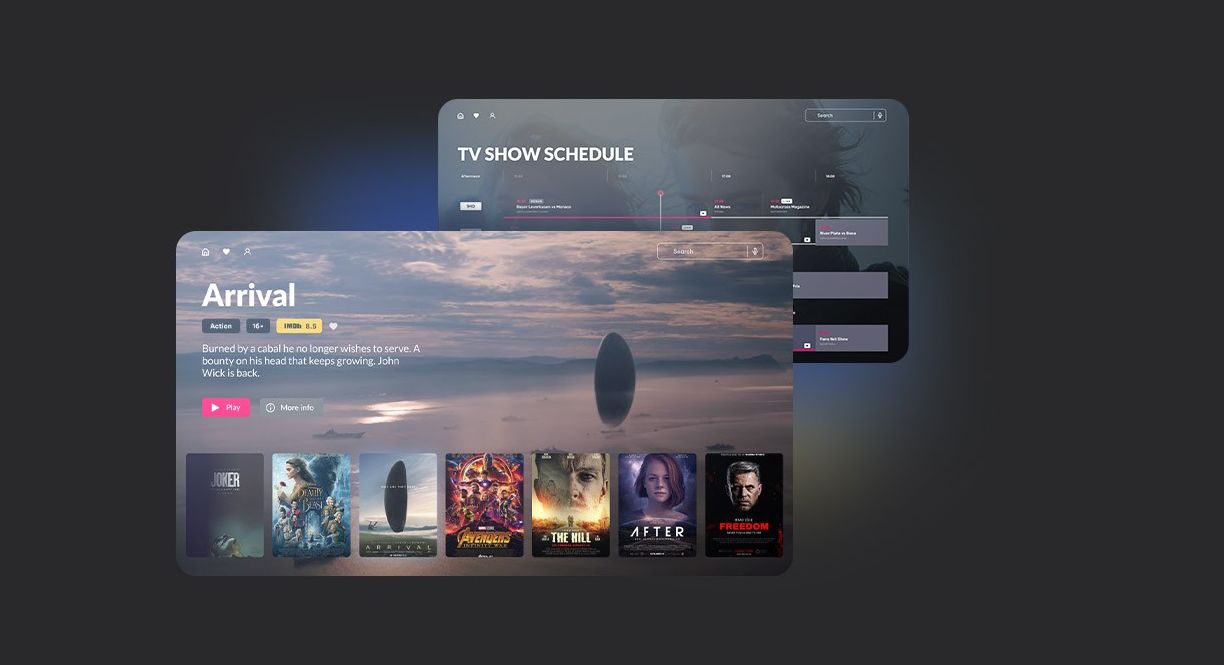
Based on our years of OTT apps development, one of the most common — and costly — mistakes is optimizing a DRM strategy for a single platform (such as Apple TV), only to encounter major hurdles when expanding to Android or Smart TVs.
Streaming platforms need architectural flexibility from day one. Adding support for MPEG-DASH, Widevine licensing, or integrating new DRM APIs mid-flight is no small task, that’s why scaling shouldn’t require rethinking the entire backend.
Hands-on illustration
In one of our recent projects, Oxagile developed a highly configurable white-label OTT platform that, above other, was designed to support all major DRM systems. One of the challenges was to enable fast adaptation to the specific content protection requirements of different distributors and regions — each with its own compliance standards and technical constraints.
Within this platform, the team:
- Integrated multi-layered DRM support, including Widevine, PlayReady, and FairPlay.
- Enabled automatic switching between DRM systems based on device and platform.
- Built a scalable architecture that allows for quick onboarding of new regions and partners — without overhauling the backend.
As a result, the platform was able to scale efficiently and launch securely in new markets with minimal time to deployment.
The bottom line on DRM implementation
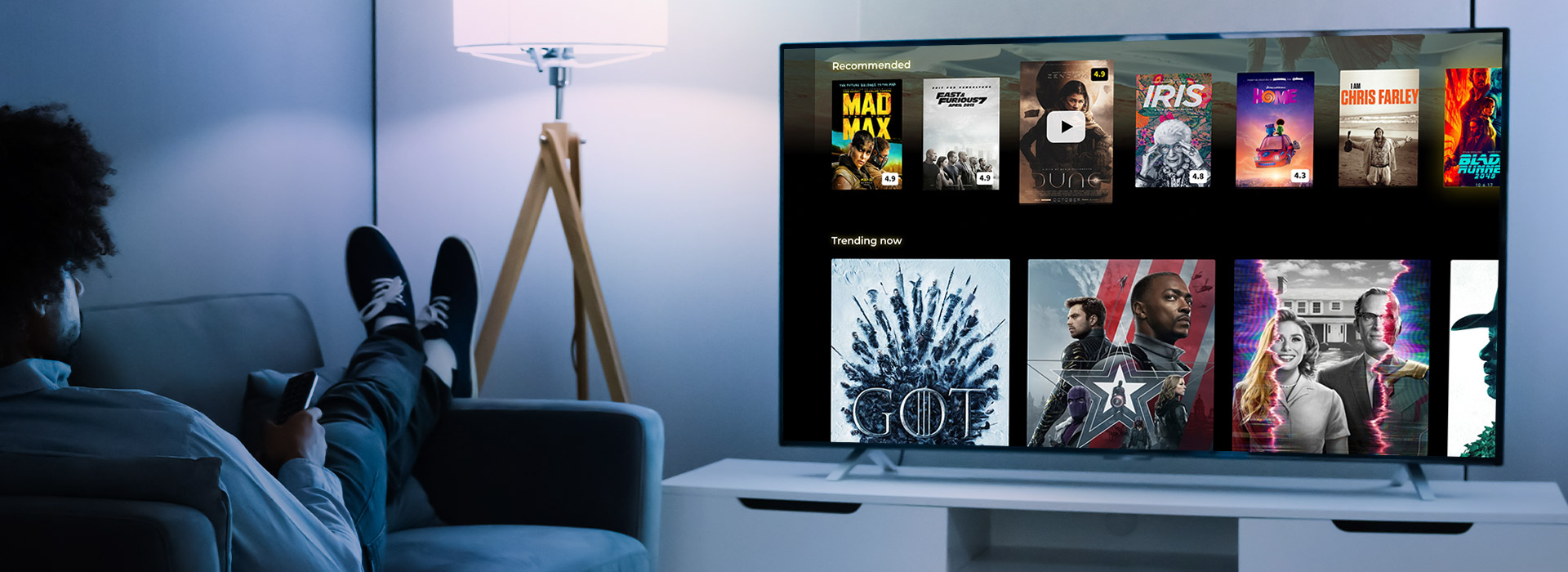
Taking advantage of OTT DRM services requires aligning with industry standards, adapting to platform-specific constraints, and designing infrastructure that can grow without losing compliance or breaking compatibility.
If you’re launching a video service, one of the first strategic decisions should be: which DRM system will we adopt first, is our infrastructure ready to support it, and how can we scale across platforms without rebuilding from the ground up?
Because the future doesn’t just favor content distributors with great content — it rewards those equipped to protect it.
Your OTT app is not what it could be?
We’ve perfected the art (and science) of seamless multi-platform access, intuitive UI, and rock-solid DRM. Whether you’re looking to boost performance or scale effortlessly, we’ve got the expertise to make it happen.

